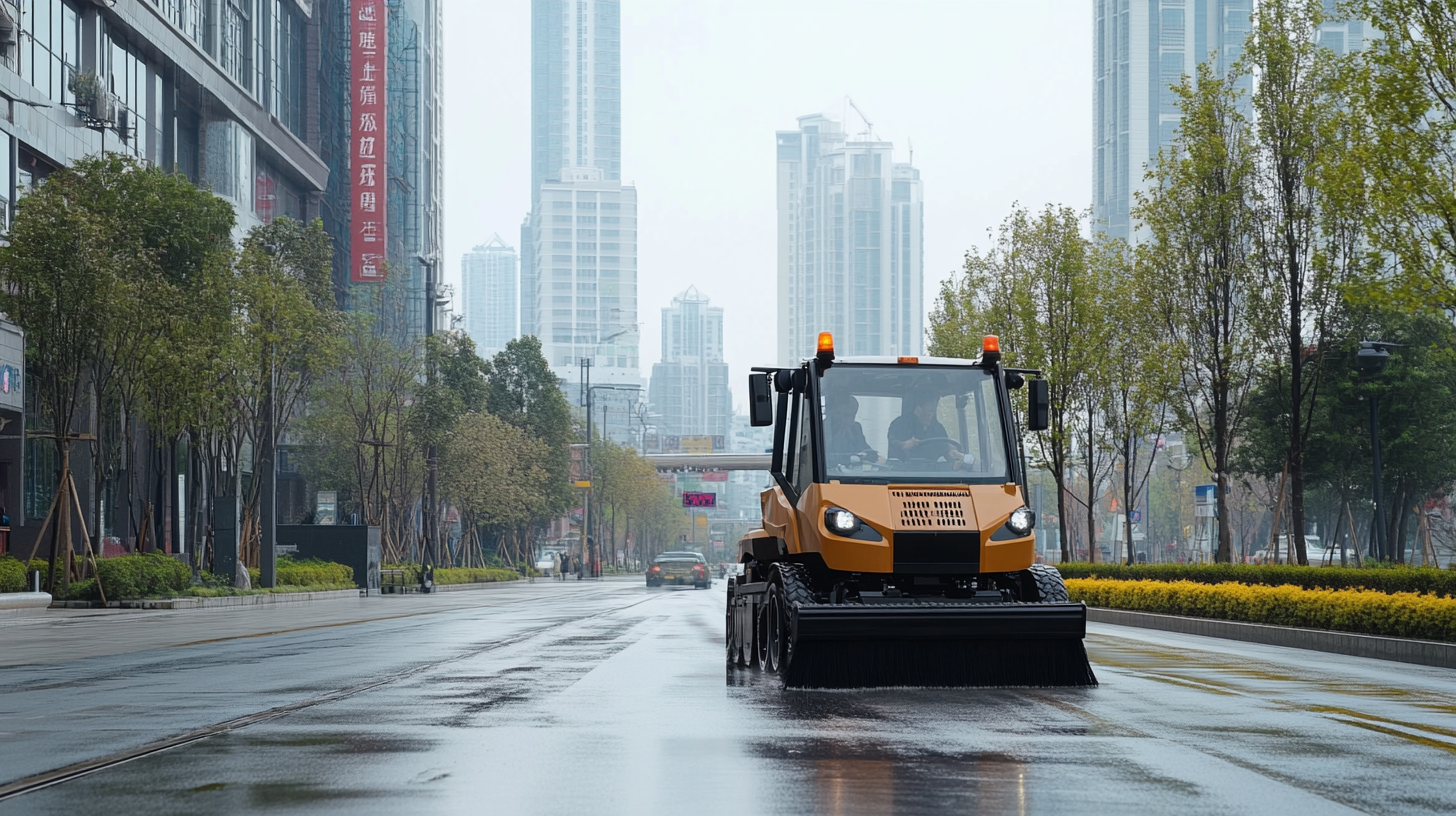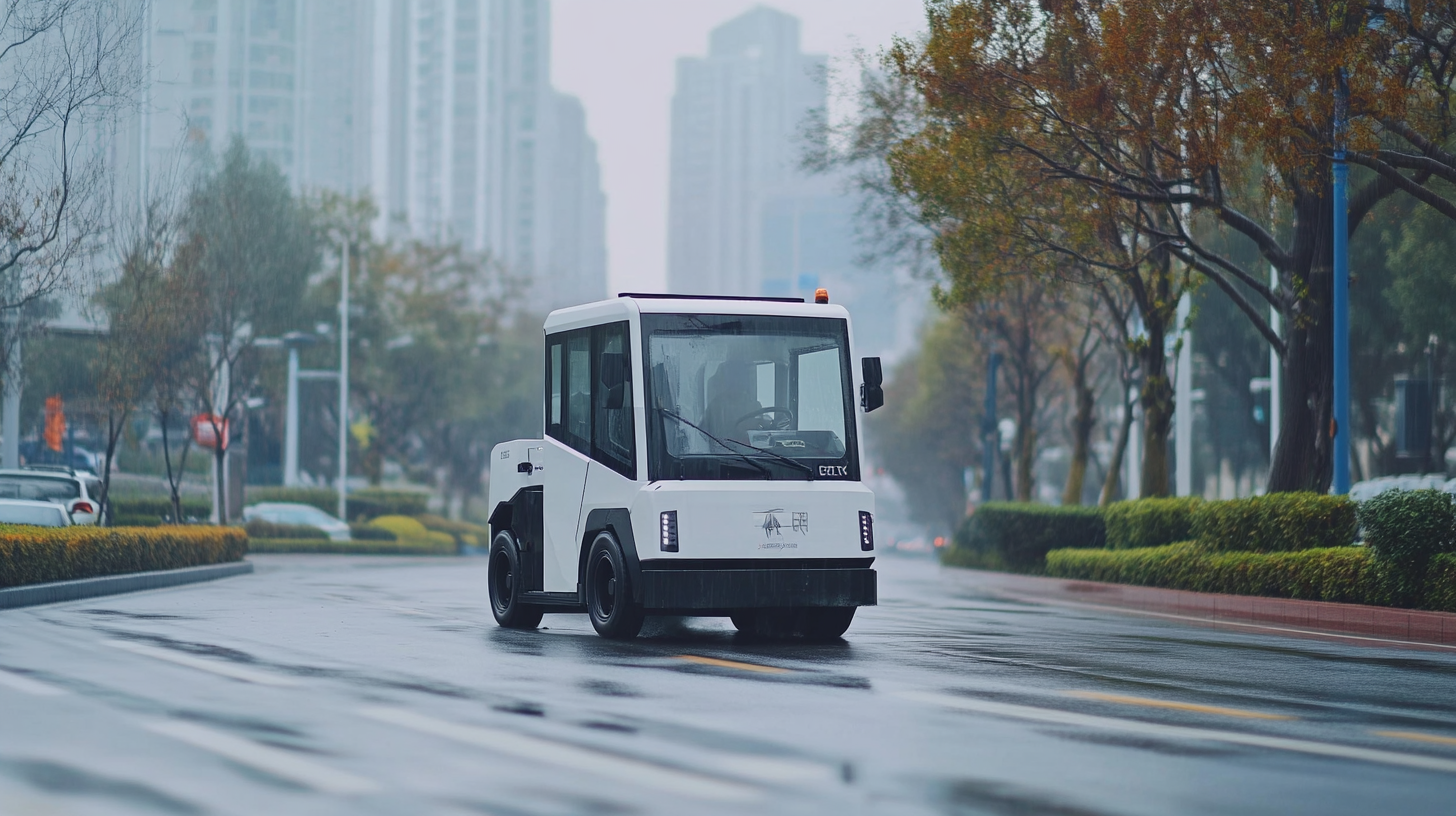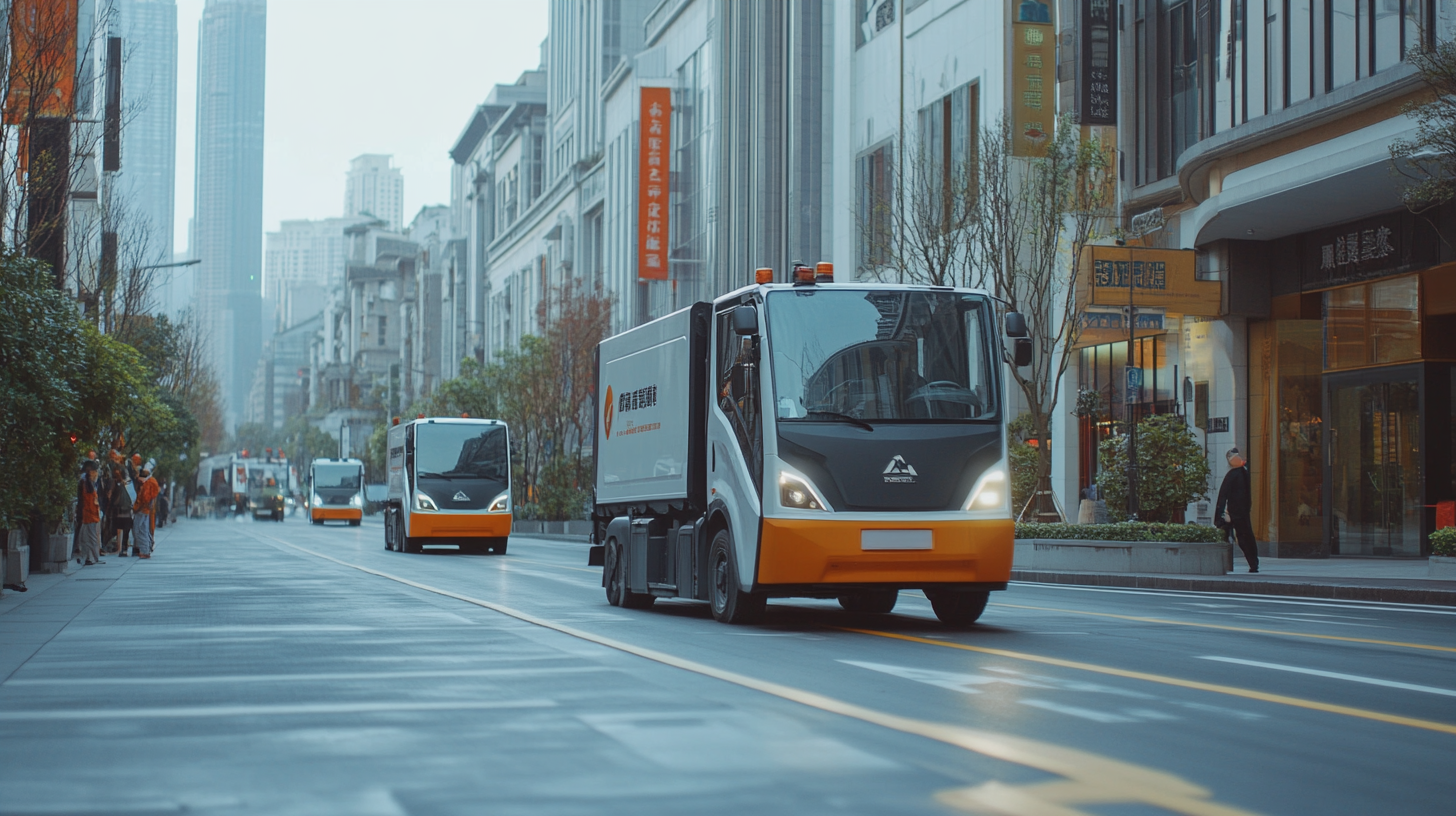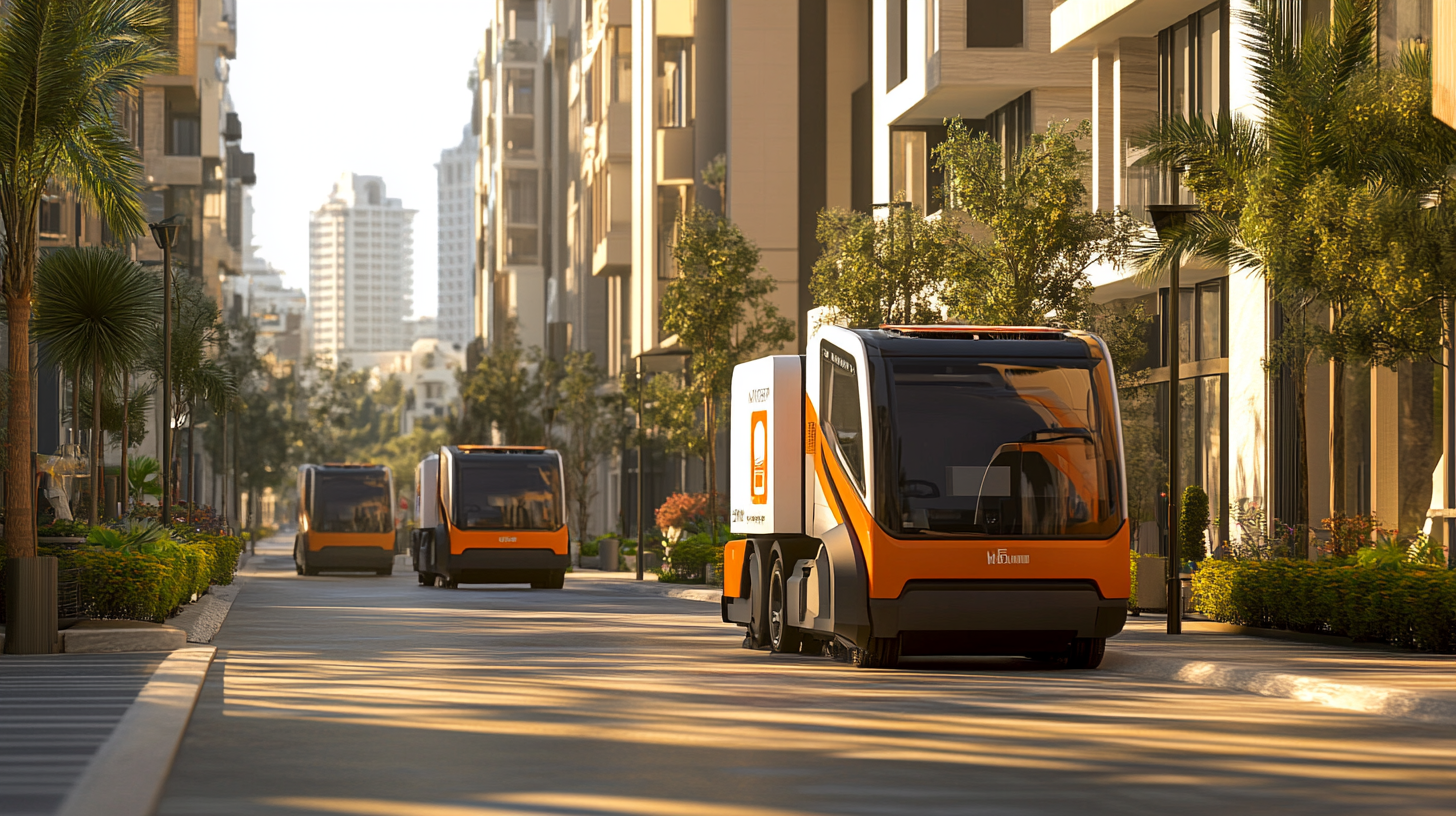Leave Your Message
In recent years, urban landscapes have undergone a significant transformation as cities adopt smart technologies to enhance efficiency and sustainability. Among the pivotal innovations in urban maintenance is the Electric Sweeper, which has emerged as a crucial tool in the fight against pollution and street waste. According to a report by the International Council for Local Environmental Initiatives (ICLEI), cities that implement electric sweepers can reduce particulate matter by up to 25%, contributing to cleaner air and improved public health. As metropolitan areas strive to meet the rigorous environmental standards set forth by global initiatives, the adoption of these advanced cleaning machines is becoming increasingly paramount.
The evolution of electric sweepers is not merely a response to environmental concerns; it also embodies the integration of cutting-edge technology in urban services. As highlighted in a recent study by MarketsandMarkets, the electric sweeper market is projected to grow at a CAGR of 8.5% from 2023 to 2028, driven by innovations such as autonomous operation and smart sensors. This growth is indicative of a broader trend as cities worldwide seek more sustainable and efficient solutions to manage waste and maintain their infrastructure. Thus, understanding the evolution and future of electric sweepers is essential for any smart city looking to optimize its urban maintenance strategy while promoting environmental stewardship.

As urban areas continue to grow, the quest for cleaner air becomes increasingly urgent. Electric sweepers, a vital component of smart cities, play a significant role in enhancing urban air quality. According to a report by the International Council on Clean Transportation (ICCT), conventional street cleaning methods can contribute to air pollution through the emission of particulate matter and other harmful pollutants. In contrast, electric sweepers operate without emitting greenhouse gases, significantly reducing local pollutants. Studies indicate that cities implementing electric sweeping technology have recorded a decrease in airborne particulate matter by up to 30%. For instance, a case study in Los Angeles revealed that the introduction of electric sweepers led to a notable improvement in air quality, resulting in healthier environments for residents. Furthermore, the use of electric sweepers aligns with the broader goals of sustainable urban development, showcasing a shift towards more eco-friendly solutions. Beyond their direct impact on air quality, electric sweepers also contribute to quieter urban spaces, posing less noise pollution than their diesel counterparts. The European Commission reported that noise reduction can enhance the quality of life in urban areas, making cities more pleasant for residents and increasing the effectiveness of public spaces. As cities transition towards smart solutions, electric sweepers emerge as a critical tool for promoting cleaner air and creating healthier urban ecosystems.

The rise of electric sweepers in smart cities is a direct reflection of technological innovations reshaping urban infrastructure. As cities evolve to become more sustainable and efficient, these machines are at the forefront, integrating advanced features that enhance their performance and reduce environmental impact. Electric sweepers utilize electric propulsion systems that significantly lower emissions and noise pollution, making them suitable for diverse urban environments. This green technology aligns seamlessly with the goals of smart city initiatives to promote cleaner living spaces.
Recent advancements in battery technology have notably expanded the capabilities of electric sweepers. Modern machines now boast longer operational times and shorter charging periods, alleviating concerns about productivity. Additionally, the incorporation of IoT sensors allows for real-time monitoring and data analytics, ensuring optimal maintenance schedules and efficient route planning. With the ability to connect to smart city platforms, electric sweepers can communicate with traffic management systems, optimizing their routes based on real-time city data.
Moreover, the automation and sophistication embedded in electric sweepers enhance their effectiveness. Equipped with AI-driven navigation systems, these vehicles can adapt to dynamic urban landscapes, avoiding obstacles and ensuring thorough cleaning across various terrains. This level of intelligence not only boosts street cleanliness but also enhances safety for pedestrians and cyclists. As cities continue to invest in smart technologies, electric sweepers will play a critical role in achieving cleaner, more livable urban spaces, embodying the synergy between innovation and sustainability.

Electric sweepers have undergone significant transformations in the context of smart cities, particularly when comparing them to traditional models. The advancements in technology have enabled electric sweepers to not only enhance efficiency but also contribute to sustainability goals. Unlike their traditional counterparts that are often powered by fossil fuels, electric sweepers utilize clean energy, dramatically reducing carbon emissions and noise pollution in urban environments. This shift is crucial as municipalities increasingly seek to create greener, more livable spaces for residents.
A comparative analysis reveals stark differences in operational efficiency and cost-effectiveness. Electric sweepers are equipped with advanced sensors and autonomous capabilities, allowing them to navigate busy city streets more effectively than traditional models. The integration of IoT technology facilitates real-time monitoring and data collection, enabling operators to optimize routes and scheduling. Furthermore, while the initial investment for electric sweepers may be higher, their reduced operational costs over time—including lower fuel and maintenance expenses—make them an economically attractive option for city management.
Moreover, electric sweepers contribute to a city's overall smart infrastructure. They can be integrated with smart grid systems to charge during off-peak hours, thereby utilizing renewable energy sources and minimizing strain on the electric grid. This synergy not only enhances operational efficiency but also fosters a commitment to sustainable urban development. As cities continue to evolve, the transition from traditional sweepers to electric models signifies a forward-thinking approach to urban cleanliness and environmental responsibility.

The shift towards electrification in urban management, particularly with electric sweepers, has significant economic implications for cities striving for sustainability. As municipalities increasingly recognize the importance of clean air, electric sweepers serve as a practical solution to mitigate pollution, aligning with broader commitments to carbon neutrality. For instance, Columbus, Ohio, aims for carbon neutrality by 2050, highlighting the economic efficiency of implementing clean technologies in its fleet management. According to recent reports, transitioning to electric vehicles can reduce fuel and maintenance costs by over 60%, creating substantial savings that municipalities can reinvest in infrastructure and community services.
In addition to economic savings, electric sweepers contribute to enhanced urban quality of life. As cities like Shenzhen have demonstrated, a dedicated move towards electric municipal vehicles has not only improved air quality but has also attracted investment and tourism by creating cleaner, healthier environments. Data indicates that transitioning to electric municipal fleets can lead to a reduction in greenhouse gas emissions by more than 80%. This shift not only addresses immediate environmental concerns but also positions cities as leaders in sustainability, fostering a favorable economic climate for businesses and residents alike.
Furthermore, initiatives in countries such as the Netherlands, which plans to restrict fossil fuel deliveries by 2025, exemplify how electrification can drive economic growth through job creation in green technologies. By prioritizing electric sweepers and other zero-emission vehicles, cities can tap into a growing market for sustainable products and services, ensuring long-term economic viability while fulfilling environmental mandates. These developments signify a progressive trajectory in urban management, where economic benefits align seamlessly with ecological responsibility.
The integration of artificial intelligence (AI) and the Internet of Things (IoT) in electric sweepers represents a significant leap forward in urban maintenance technologies. As smart cities continue to evolve, it is projected that the global smart street cleaning market will reach approximately $4.5 billion by 2025, growing at a CAGR of over 12% from 2020. This growth underscores the critical shift towards automation and efficient management of urban services.
AI-enabled electric sweepers are designed to optimize cleaning routes, reduce operation time, and minimize energy consumption. By employing machine learning algorithms, these machines can analyze traffic patterns and environmental conditions in real-time, allowing them to adapt their cleaning schedules accordingly. A report by MarketsandMarkets reveals that IoT-based applications are expected to account for 30% of the total smart cleaning market share by 2025, which emphasizes the rise of connected devices and their ability to enhance operational efficiency.
Furthermore, integrating IoT technology into electric sweepers not only improves operational capabilities but also facilitates better data collection for urban planning. Each unit can gather extensive information on debris types, pollution levels, and even track their own operational metrics. According to a study by Frost & Sullivan, cities utilizing smart waste management solutions can achieve a 20-30% reduction in operational costs, making them an attractive option for municipalities striving to maintain clean and sustainable environments.
The synergy between AI and IoT in electric sweepers not only enhances the performance of urban cleaning systems but also aligns with the broader objectives of smart city initiatives, such as sustainability, resource optimization, and enhanced service delivery. As cities continue to embrace technology, the future of electric sweepers remains bright, paving the way for cleaner and smarter urban environments.
